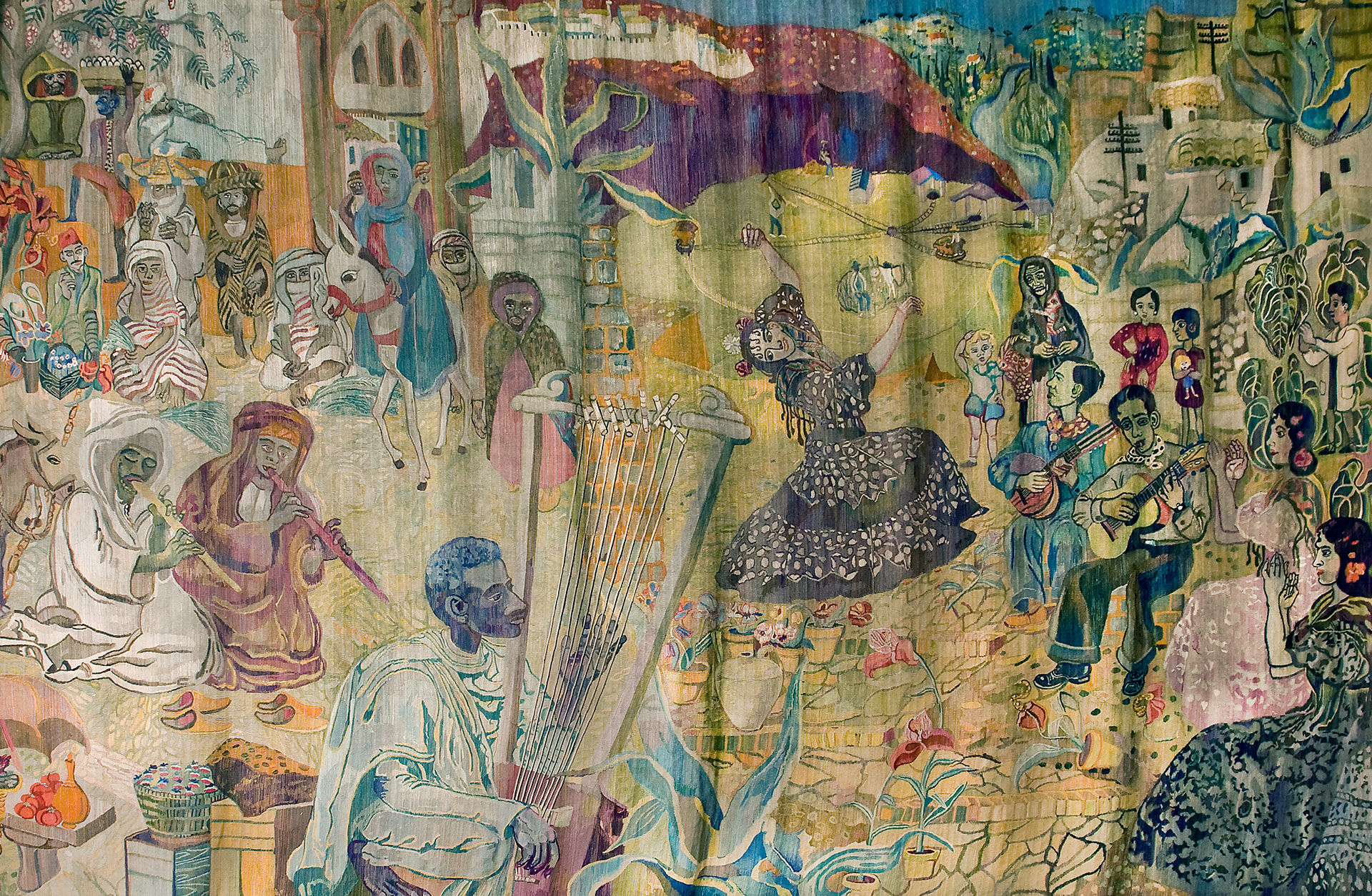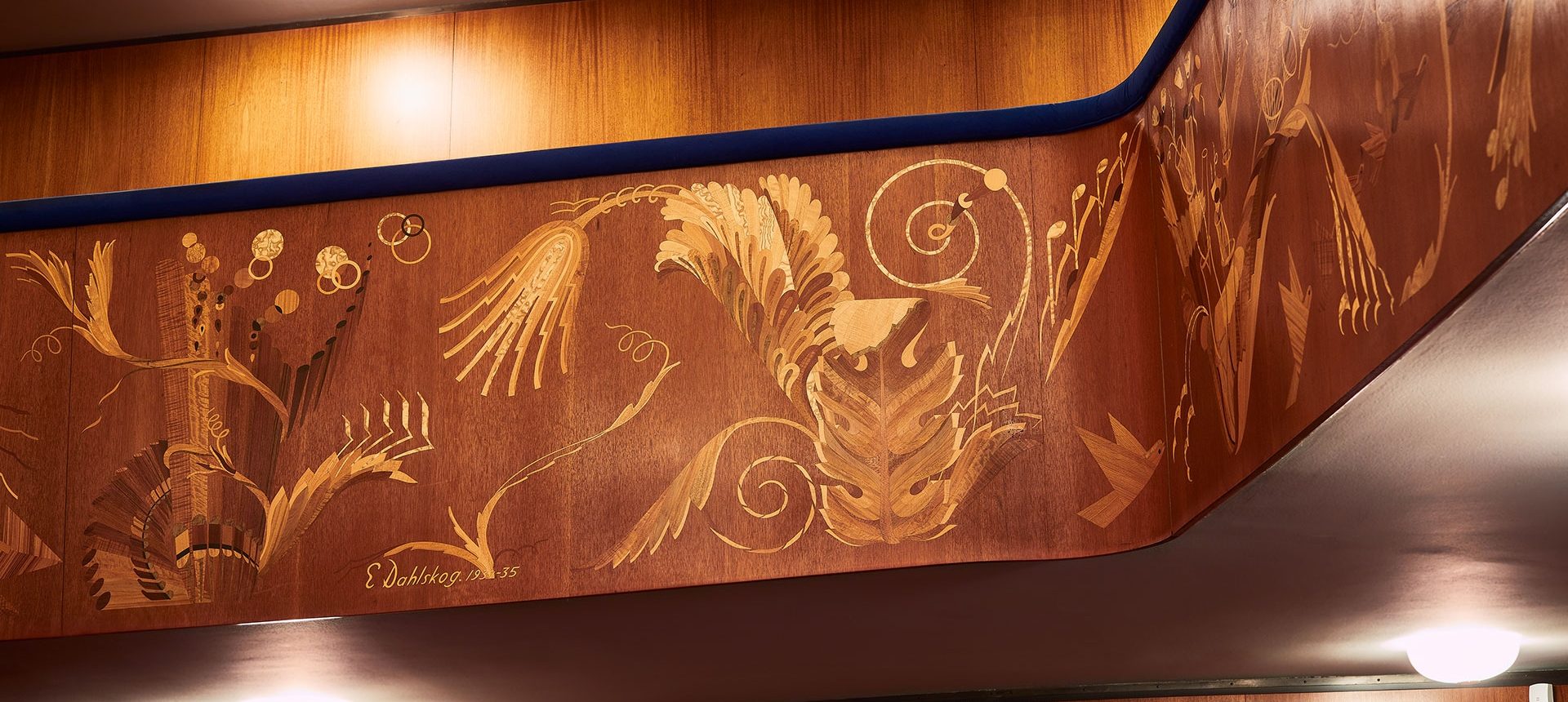The intarsia in Stenhammar Chamber Hall with the theme The toning nature extends like an arabesque around the gallery’s barrier. It begins with a sea god trumpeting in a seashell and then winds its way in figurations bordering on abstract patterns, leaf vines and flowers. In the middle of the arabesque, a golden lyre flares up. Birds in flight, sea shells and seahorses bring the arabesque to its final destination – another sea god, this time with a lyre in its arms.
Ewald Dahlskog (1894-1950) and his skilled craftsmen worked with the intarsia 1934-1935. The technology means that patterns and motifs are cut from a wooden base and then filled with different types of wood in up to about 100 colours. Dahlskog made original drawings and then worked closely with wood carvers and carpenters in the actual design.
Ewald Dahlskog (1894-1950)
Ewald Dahlskog was one of the most versatile artists of his time. He drew and painted environments, landscapes, still lives and portraits, made decorations in cinemas, factory offices, passenger ferries (Swedish American Line M/S Stockholm) and concert halls and was active as an artisan in glass and ceramics. In addition, he made posters, book and newspaper illustrations and theatre decorations. Ewald Dahlskog was described by his friends as a busy bee who always dealt with his tasks vigorously.
Perhaps his most important contribution was to revive the art of intarsia, wooden mosaic. In the 1920s, it was largely only Ewald Dahlskog and the Viennese Victor Lurje who engaged in intarsia in Europe. This craft had been developed in the 18th century as a decoration of finer furniture but then fell into oblivion.
He was also hired by the match king Ivar Kreuger to decorate the Swedish Match Company’s new building in Stockholm and the Banque de Suède et de Paris. Other of Dahlskog’s marches were made for L M Ericsson and Bofors ironworks. He also created decor and blasted mirror glass for the former cinema Spegeln on Avenyn.
113 x 38 x 27 cm (hxdxb)

Art with music in focus
Many of the works of art in Gothenburg Concert Hall are connected to music or have a relationship with Gothenburg Symphony Orchestra. Here you will find everything from portraits of composers such as Grieg and Sibelius to Sweden's largest weave with patterns by Sven X-et Erixson.
Experience the concert magic
Gothenburg Concert Hall has enchanted music lovers since 1935! It is one of life’s great pleasures to come here, relax and take in the atmosphere in the beautiful surroundings, before being moved, exalted and overwhelmed by the evening’s music.

